Suzuki revamp their middle-weight nakedbike offering with the more advanced GSX-S750. Here's our Suzuki GSX-S750 review. Test: Kris Hodgson, Images: Andrew Gosling/TBG Photography
The second sibling in the Suzuki GSX-S family has arrived in Australia in the form of the GSX-S750, based on the K5 GSX-R750 powerplant and replacing the GSR750, complete with a new electronics package and plenty of style.
Suzuki’s GSX-S1000 saw great success on its arrival, with the later faired F model likewise receiving a good rap, and there was days during the Sydney commute where half the motorcycles I seemed to encounter were GSX-S1000s.
Now the middle-weight GSX-S750 is here and first impressions suggest it not only carries that GSX-R DNA, but also closely follows in the GSX-S1000 footsteps, with quite a few features carried across.
It probably doesn’t need explaining, but the GSX-R750 has always held a special position in the motorcycling world, bridging the gap between the 600 and 1000cc categories and arguably offering the best of both worlds – on the road at least, where capacity restrictions aren’t a concern.
The weight and handling of a 600 with the performance a strong step up. Now granted the GSR and now the GSX-S feature a revised and more street orientated version of the K5 (2005) GSX-R750 engine, but you’re getting that iconic engine.
We had a long term GSX-S1000 last year and while it was a great machine it had a niggling throttle/fueling issue. Not so the GSX-S750, for me at least, and while it still feels like a wide machine between the legs, something I’ve always found with the GSX-Rs, it’s lighter, more nimble and much more road orientated.
Why do I say that? Because you can actually have a reasonable crack without going crazy, and when you do want to go crazy there’s a nice punch of top end power.
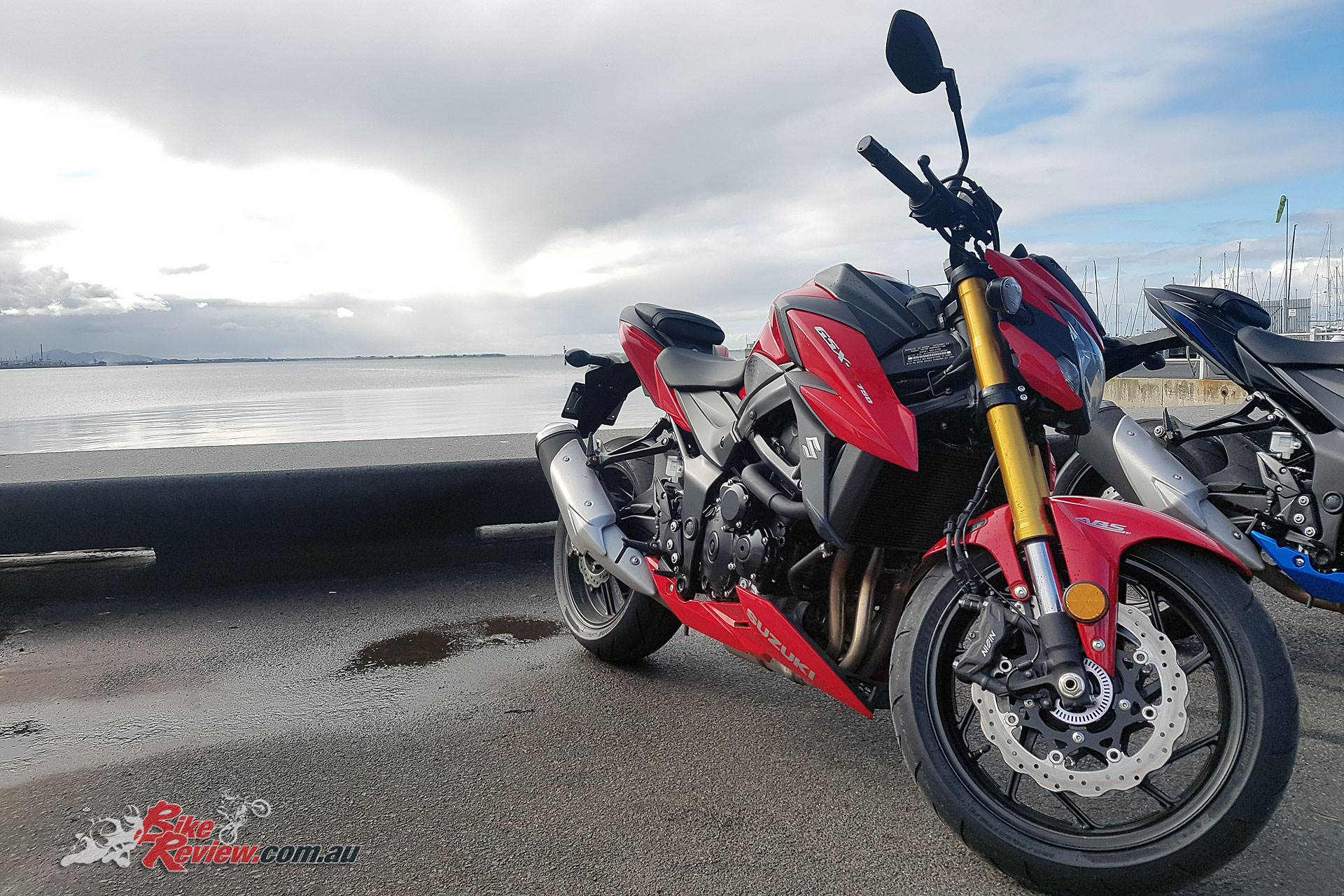
Based on the GSR750, the new GSX-S750 has been heavily updated, with only a nominal increase in the RRP
Is this the GSR750 2.0? Well kind of. It’s the same engine, revised in various ways, but as you’ll have seen from our Launch Preview article, there’s plenty of changes, from brakes, styling and electronics, through to the suspension.
So what are you getting? For $12,990 on road, a price that reflects the most expensive state’s MSRP in Australia, you’ve got an improved K5 GSX-R750 engine, electronics including ABS and three level switchable traction control.

The GSX-S750 looks like a slightly less beefy version of the GSX-S1000, which is essentially what it is
Styling is based on the GSX-S1000, with a few changes, like the additional engine cover bodywork, black levers and black handlebars. The exhaust isn’t as refined as on the 1000, but also doesn’t feature a valve, saving weight, with the airbox design ensuring a great induction howl.
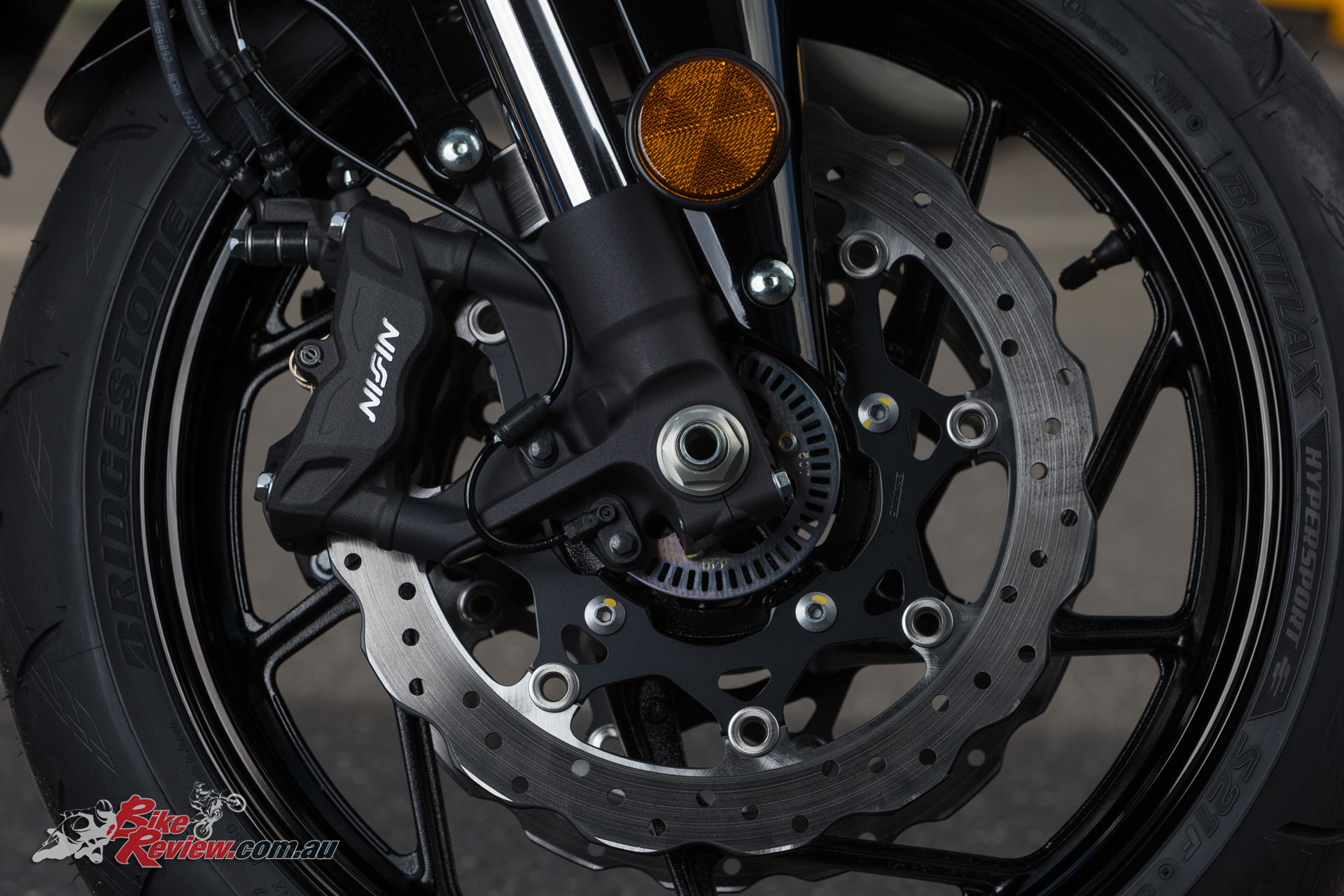
New four-piston Nissin radial mount two-piece calipers offer good bite and modulation. Petal rotors look the business too.
The new brakes on the front-end are well suited to the GSX-S750, and very well supported by the front-end, with Suzuki apparently going through 100 different caliper, pad and master-cylinder combinations to reach this point. They hit the nail on the head in this regard.
Good bite and power is easily modulated thanks to those new Nissin radial two-piece calipers, while the rear didn’t offer all that much bite but was good at low speeds or for a bit of stability.
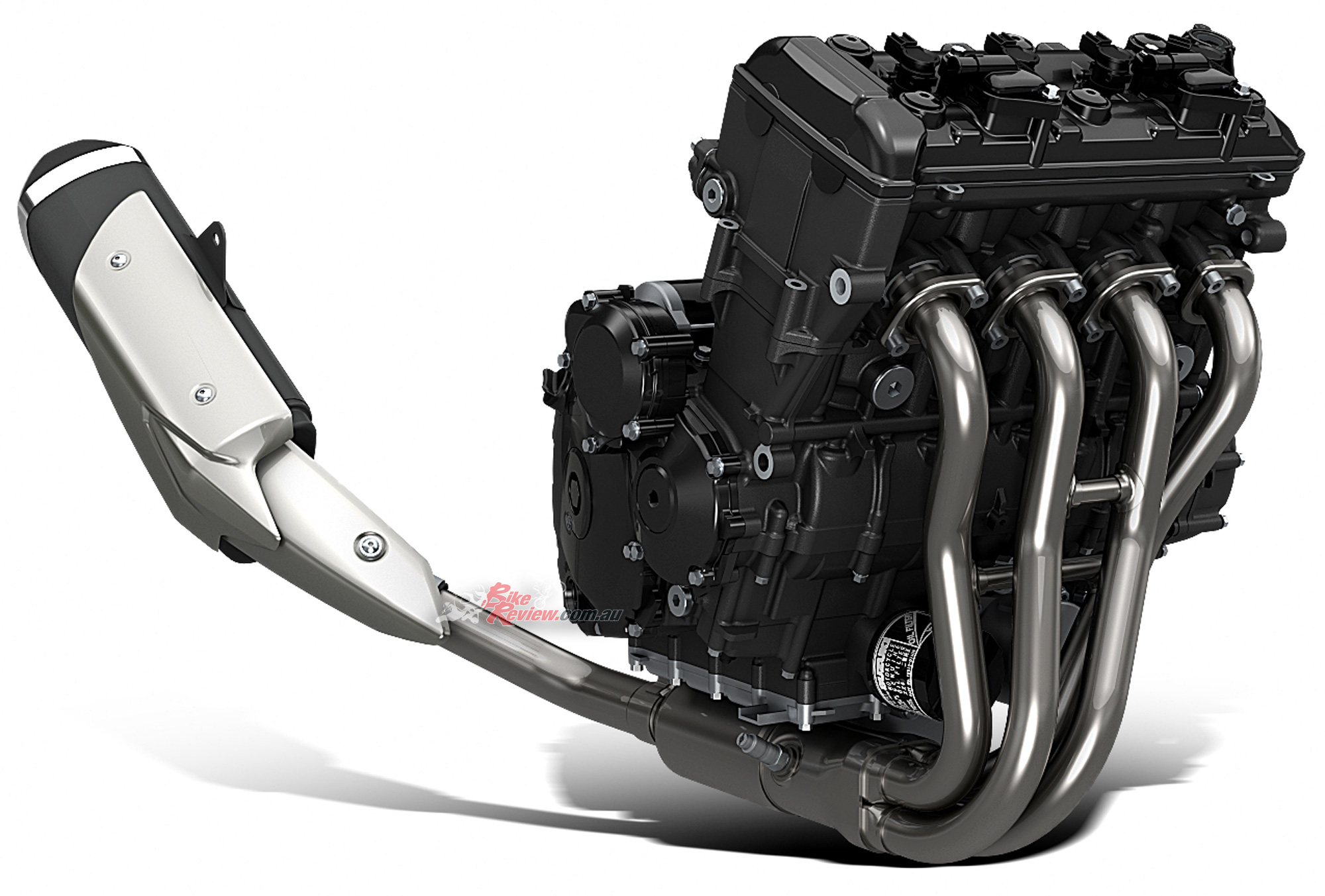
The GSX-S750 powerplant is that found on the GSR750 but revised for Euro4, increased power, better economy and a new exhaust system
The engine is torquey from down low and you don’t need to be afraid of lugging it along a gear or two higher than is necessary in traffic. Fueling is smooth, predictable and starts from right when you crack that throttle. Feathering the clutch was generally totally unnecessary. Giving the bike a bit of a rev you can actually hear as the ECU comes into play and smoothens the fueling as it tapers off. I’d say this was the cure to the GSX-S1000s fueling issue.
The gearbox was also a highlight, I was upshifting the vast majority of the time with no clutch, and the shifts are smooth and light. Downshifting is smooth, and while there’s no slipper clutch that inline four is super smooth and predictable on deceleration. There felt like a bit of run-on a few times when I was being extra aggressive on the throttle and downshifted to wash off speed, but that was no longer noticeable as I became accustomed to the engine braking.
Suzuki has shortened the gearing in the first five gears, while keeping sixth at the same ratio as the GSR, meaning you’ve got stronger acceleration and that feeling of torque but retain a top gear overdrive so to speak. This also comes into play as even at relatively legal speeds you can take off and hold those gears to build that awesome induction roar.
Comfort was also a strong point, with a relaxed seating position, easy reach to the raised ‘bars and well situated ‘pegs. As I mentioned the GSX-R and GSX-S models always feel wide to me, which meant I struggled to lock into the tank, but taking weight through the ‘pegs was natural and easy.
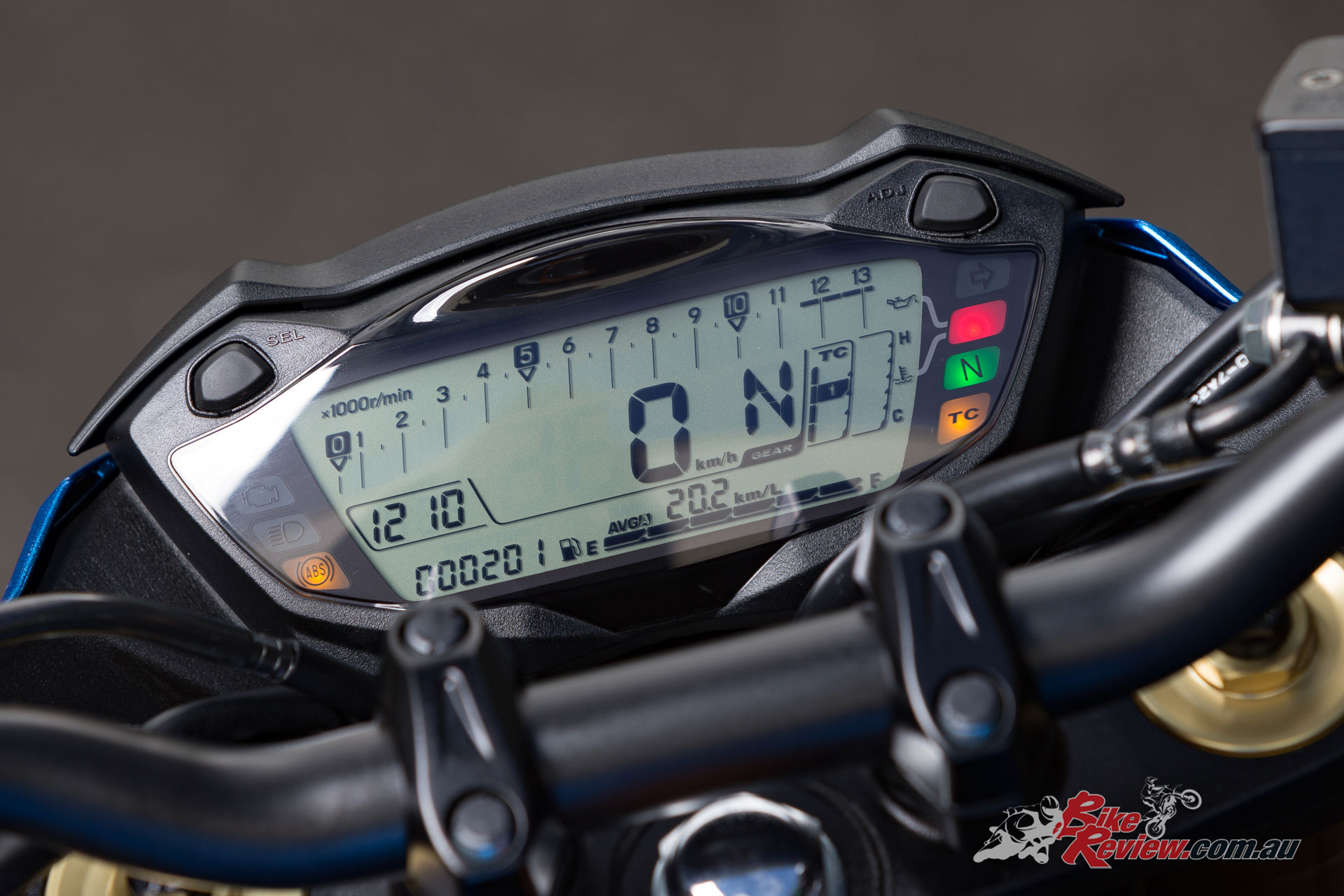
Easy to read dash shows most of your information at a glance, with Traction Control settings easy to switch through
The dash is an LCD unit with a left switchblock control allowing the different readouts to be toggled, or your traction control level to be altered. I left it in the mid-way setting of level 2 all day, which Suzuki described as the Urban Mode. The only time it noticeably came into play was on a really rough, tight, uphill section covered in rocks and road debris. There I could feel the intervention and see the notification light flickering like crazy.
Apart from that there was just a few occurrences, taking off from the side of the road on gravel or wet grass where it helped keep the rear in line. This also helped highlight the qualities of the Bridgestone Battlax Hypersport S21 tyres, which performed admirably in the dry, and handled the occasional shadowed wet section with confidence. Apart from a few light showers we were lucky to dodge most of the rain, although there was a few sections of very wet road surfaces.
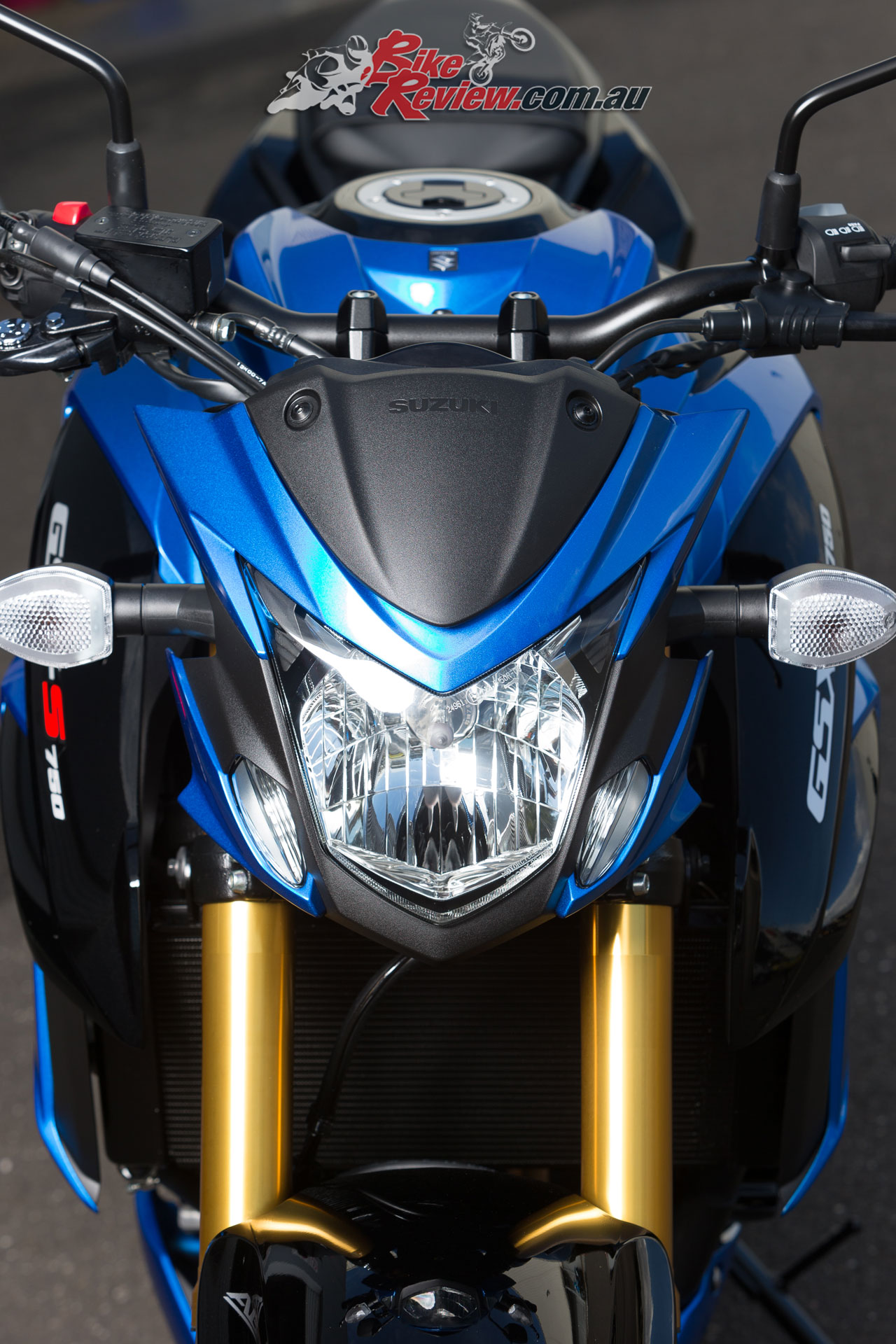
Gold KYB 41mm forks really stand out on the red and blue colour options, while blacked out forks are found on the Mat Black
Suspension is definitely a sporty set-up, designed for smooth tarmac, and is probably ideal for America or Europe, and while it handled the city, highways and good surfaces very well, the rear became a bit overwhelmed as the speeds rose on the rougher roads, as was the case with the GSX-S1000 when it arrived Down Under. Granted I’m talking right up in the rev range in fourth, but I was getting some real kick from the rear end over undulations on some of the straights.
Back at more normal road speeds through the corners this was a lot less noticeable, and the front-end felt much more comfortable. However once the speeds got high enough I was getting just a very small amount of headshake when the rear was struggling. Easily ridden through but noticeable all the same.
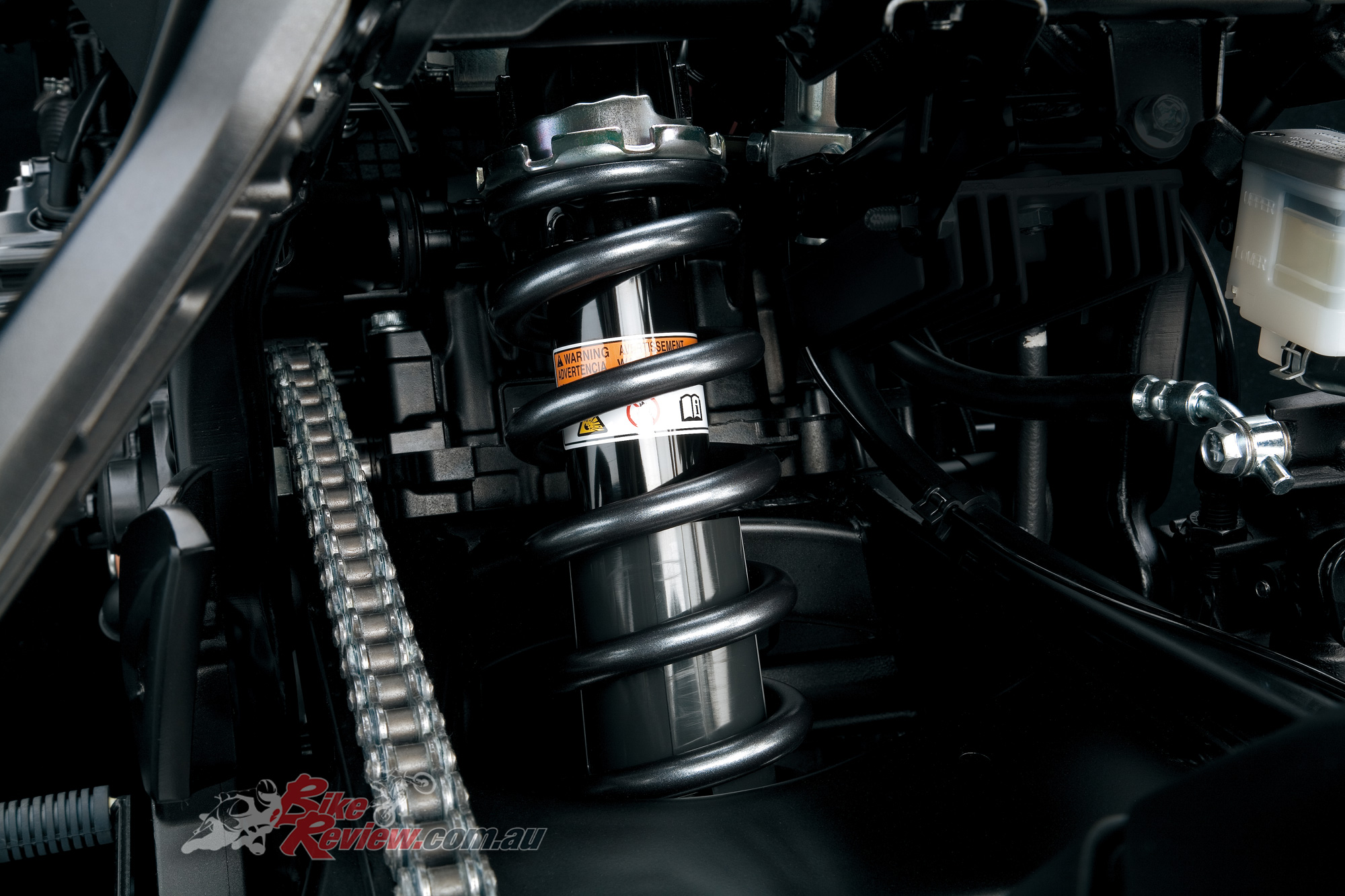
Both ends on the GSX-S750 are pre-load adjustable. A shock set up for your specific weight may be a good investment though.
Both ends are preload adjustable only so if I had the bike for a longer period I’d experiment with that, and internal changes, and this is keeping in mind I’m about 70kg in gear.
Also noticeable at these higher speeds was a welcome punch of top-end power that would appear if I kept wringing that throttle, which certainly supports Suzuki’s claims of better top-end due to some of the engine revisions. Check out the Tech Talk below for the exact changes.
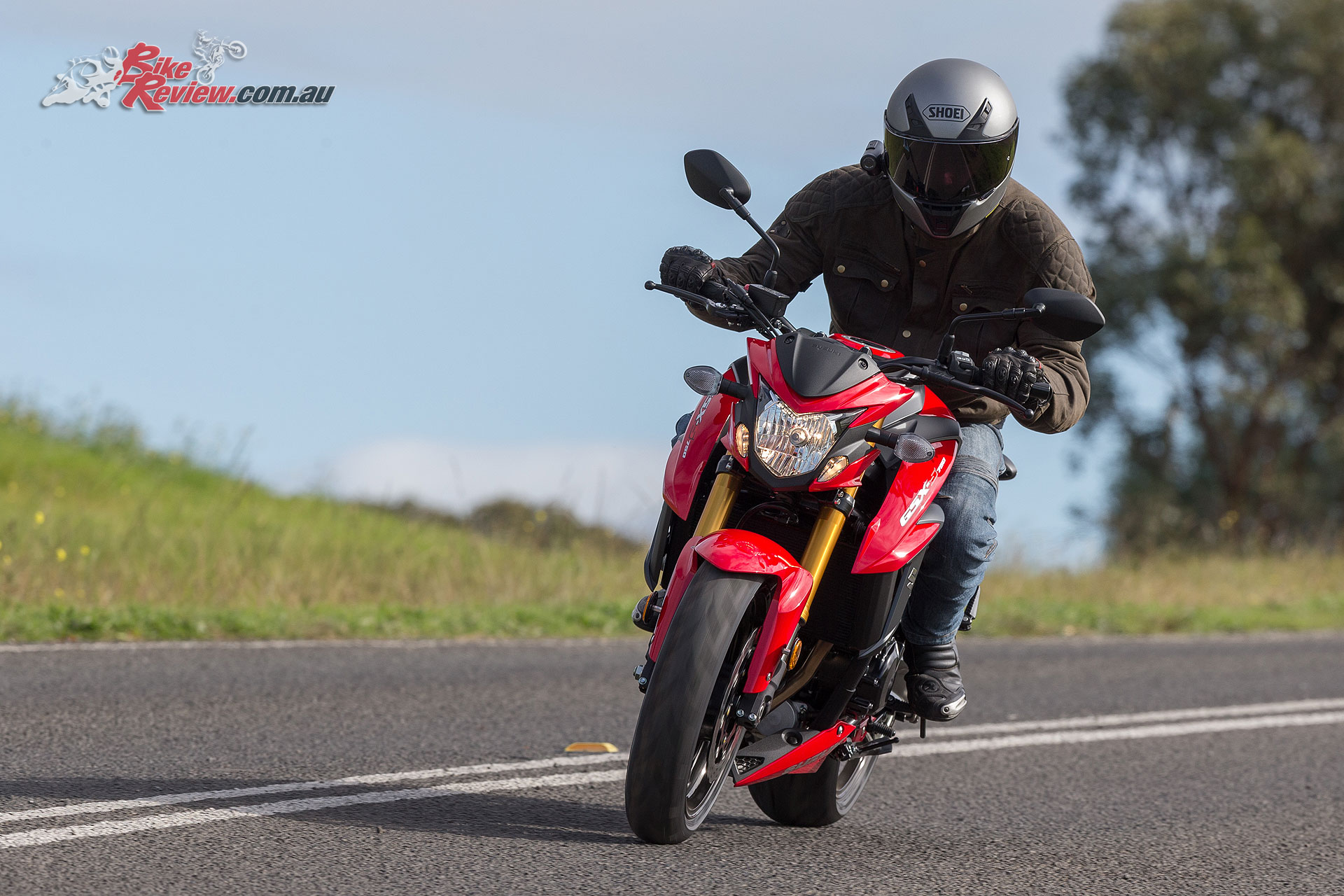
I found the GSX-S750 a strong performer with good torque from down low and a nice top end punch. More than enough for me on the road and by no means near the bike’s limits, with smooth and predictable delivery.
Overall power is up eight per cent or 6kW over the outgoing GSR750, while torque also received a very slight boost of 1Nm, with small details like petal rotors and blacked out footpegs helping the GSX-S750 stand out.
Overall I personally really like the styling, with the Mira Red option the pick of the three choices, but unusually, not being that far ahead of the Blue or Mat Black options. Kudos to Suzuki for doing the job properly on the Mat Black version, blacking out the exhaust and adding some red pinstripes on the wheels. At the competitive price the GSX-S750 is offered at, that’s a nice extra detail.

The headlight is nice and well suited to the overall styling, but not too extreme design wise. Probably Suzuki hedging their bets to keep the bike attractive to the widest possible audience.
Granted the headlight still isn’t anything to write home about, it looks good, but not amazing. However in all other regards the bike really lives up to the GSX-S family name.
I was a bit surprised to see the wet weight of 213kg fully fueled (the 1000 is 214 ready to ride), because while the bike is reasonably heavy to push around it feels lighter and more nimble than its 1000cc sibling. It has a good and easy turning circle with handlebar stops that will go a long way to preventing you turning the ‘bars in too far and dropping the bike.
Taillights are LED, and indicators feature some snazzy clear lenses, which just look a bit more up-market. Add in all the blacked out components across all colour options and Suzuki have ensured the bike may be cheap to buy, but it doesn’t look cheaply made.
It’s just one hell of a good middle-weight naked option, and while the rear suspension was a bit stiff for me, that’s a complaint shared across so many machines I test that it’s hard to make it too much of a criticism. The engine, fueling and electronics on the other hand are all exceptional and the fueling in particular is a step up from the GSX-S1000.
I’m looking forward to seeing plenty of the GSX-S750 on the road, and it’s the ideal option for those upgrading from a learner machine or returning to riding if you’re after a nakedbike.
2017 Suzuki GSX-S750 Tech Talk:
The 2017 GSX-S750 retains the K5 GSX-R750 based powerplant found in the outgoing GSR750 model, but has seen a number of improvements to boost power by eight per cent, with torque up a single Nm to 81Nm. Power is now 84kW (114hp) thanks to new crankcase ventilation holes to reduce pumping losses, while new 10-hole fuel injectors are also used, helping with Europ4 compliance, which boosts fuel economy. A new four-into-two-into-one exhaust is also used, with equalizer pipes designed to boost mid to low range output.
A catalytic converter is also included in the exhaust however there is no exhaust valve or servo motor, helping save on weight. On the Mat Black version the exhaust muffler is totally blacked out. While the exhaust is relatively quiet the airbox has been designed with three optimised inlets, giving a great induction howl, which is particularly impressive sounding while riding the bike.
Gearing has been reduced in first through fifth gear to offer better acceleration, while sixth gear retains the same ratio as found on the previous GSR as an overdrive.
Electronics boasted by the GSX-S750 include Suzuki’s Dual Throttle Valve system, Idle Speed Control, Low RPM Assist, Easy Start System, Nissin ABS and most importantly the new three level Traction Control system, which can be switched off.
A LCD display from the GSX-S1000 provides all the information and controls on the left switchblock allow you to switch the traction control levels between off, 1 (least intervention), 2 (normal riding), and 3 (wet/slippery conditions). There’s also a gear indicator, fuel gauge, trip meters, estimated remaining range, and fuel economy calculator.
Brakes have been updated with Nissin four-piston radial-mount, two-piece calipers on 310mm rotors, while a single 245mm rear rotor and caliper is fitted, this is backed up by the aforementioned Nissin ABS system.
Suspension is 41mm KYB inverted forks, which offer good support and are well balanced with the new front brakes. The rear link-type monoshock was a little stiff for my 70kg in gear weight, but offers a smooth, sporty ride as long as the road surfaces are good or if you’re staying within the legal speed limits. A new tapered swingarm also replaces the old box-section offering and is considerably more stylish.
New 10-spoke cast aluminium wheels look the business and are clad in Battlax Hypersport S21 tyres.
Smaller details include black levers with an adjustable front brake lever, LED taillight, clear indicator lenses, petal rotors, lightweight footpegs, raised fat ‘bars and gold anodized fork legs. Suzuki have also added (in comparison to the GSR) the bellypan as standard equipment, while in comparison to the GSX-S1000 the bodywork has been revised to offer more coverage over and around the engine.
The fuel tank capacity is also 16L with Suzuki claiming 20km/l mileage.
2017 Suzuki GSX-S750 Specifications:
Price: $12,990 On-Road MSRP
Warranty: Two-year, unlimited kilometre
Colours: Pearl Mira Red, Glass Sparkle Black, Metallic Triton Blue, (GSX-S750Z Special Edition – Metallic Matte Black)
Claimed power: 84kW[114hp]@10,500rpm
Claimed torque: 81Nm@9000rpm
Wet weight: 213kg
Fuel capacity: 16L
Engine: Liquid-cooled, four-stroke, DOHC, in-line four-cylinder, 749cc, 72 x 46mm bore x stroke, 12.3:1 compression ratio, Traction Control
Gearbox: Six-speed, constant mesh
Chassis: Steel tubular diamond frame, tapered swingarm
Rake: 25.2°, Trail: 104mm, Wheelbase: 1455mm
Suspension: KYB 41mm inverted forks, 120mm travel, preload adjustable, Link-type monoshock, 138mm travel, seven-way preload adjustable
Brakes: Nissin ABS, Nissin four-piston radial mount calipers, 310mm floating rotors, single caliper and 245mm rear rotor
Wheels & Tyres: 10-spoke cast aluminum wheels, Bridgestone Battlax Hypersport S21 tyres, 120/70 – 17, 180/55 – 17
Dimensions:
Seat height: 820mm
Overall height: 1055mm
Overall width: 785mm
Overall length: 2125mm
Instruments: LCD multifunction display
2017 Suzuki GSX-S750 Gallery
The Verdict | Review: All-New 2017 Suzuki GSX-S750
Awesome!

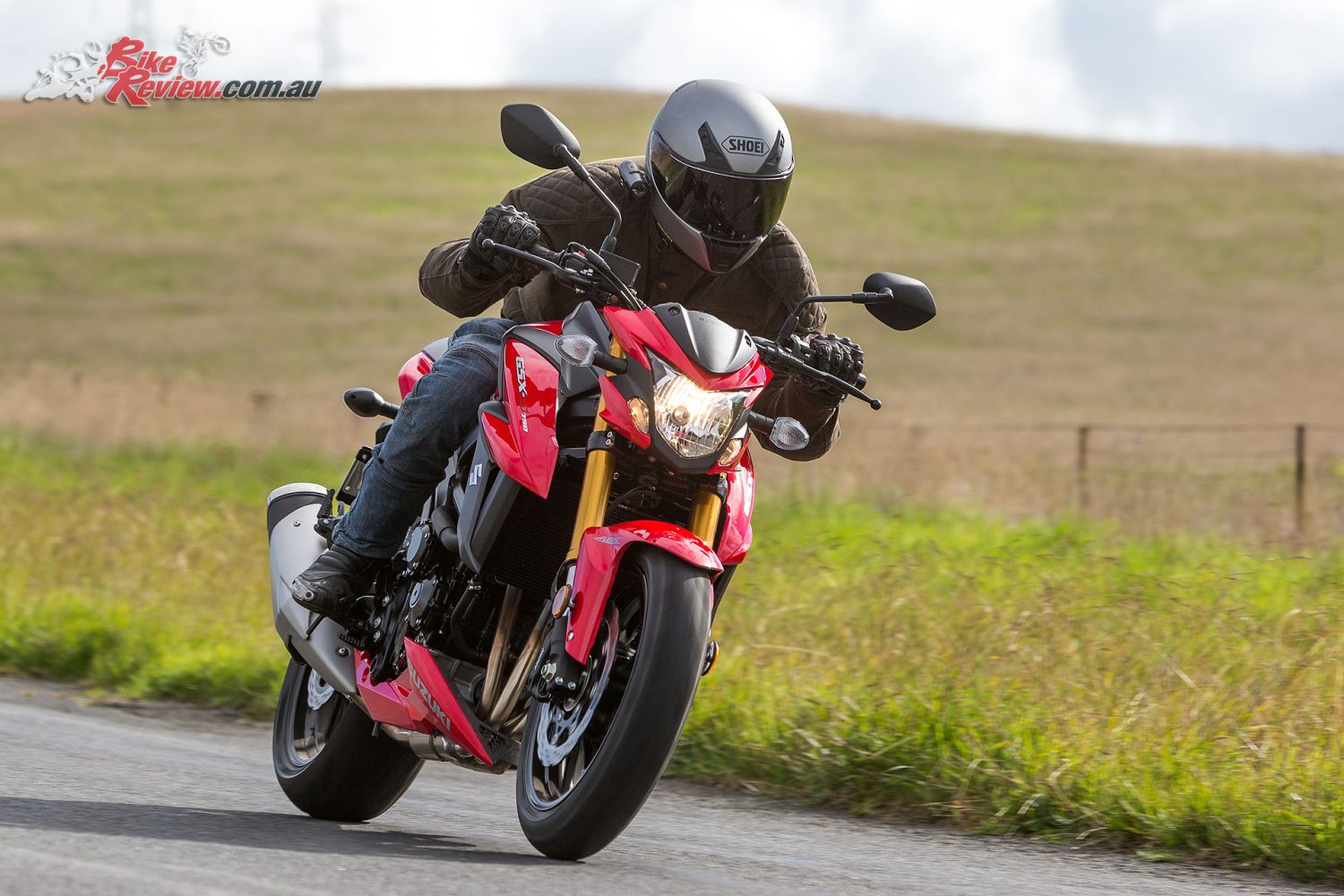
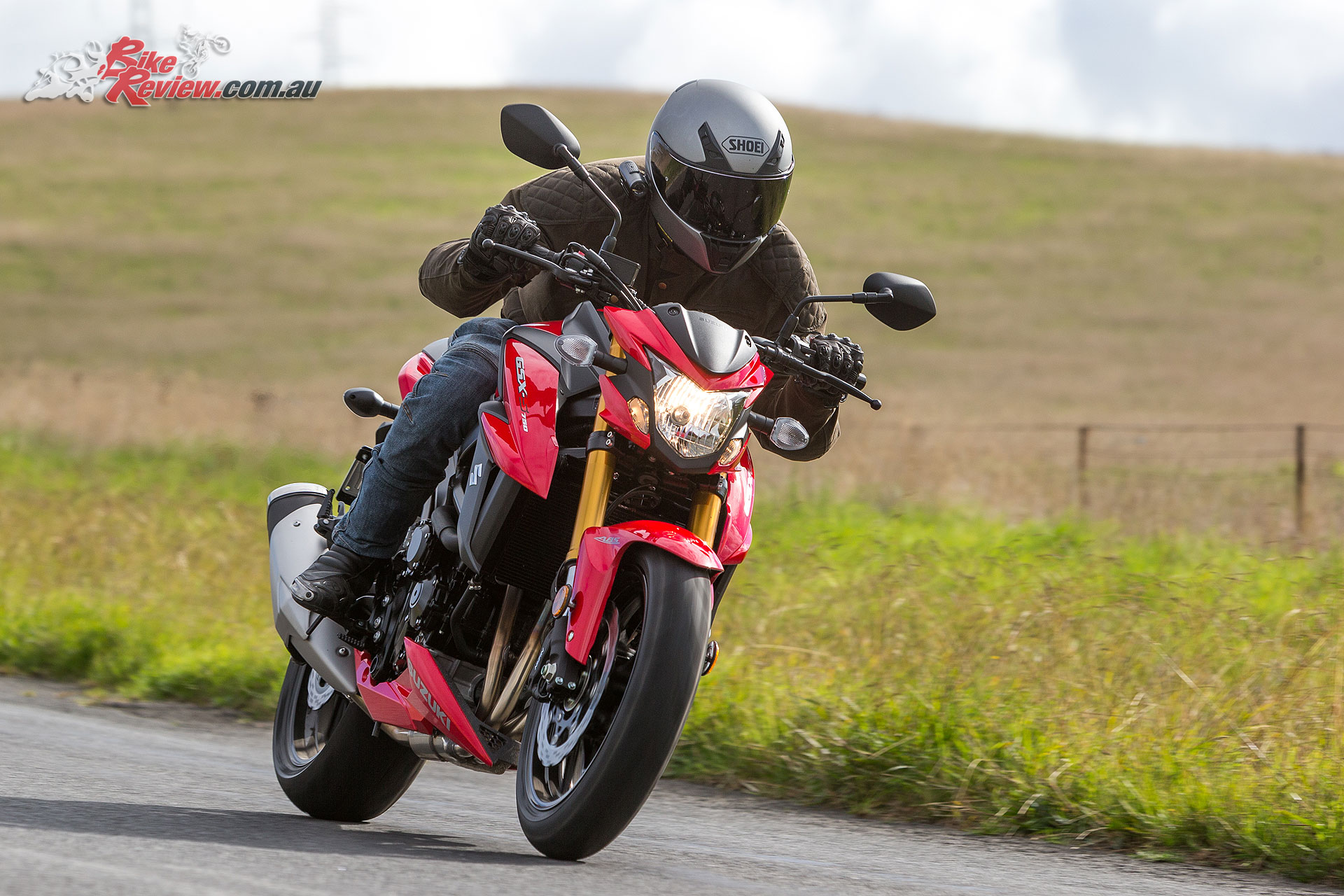

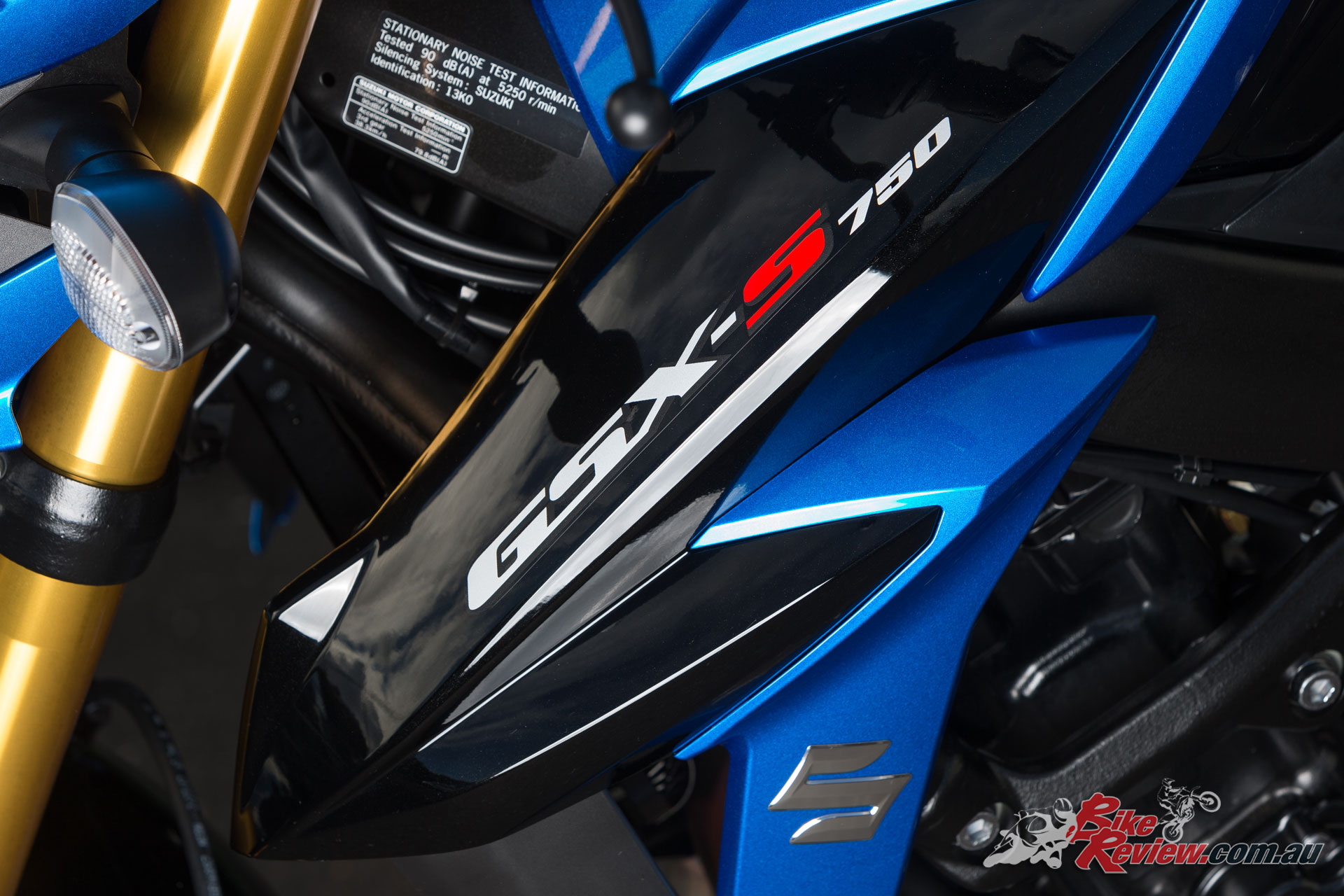
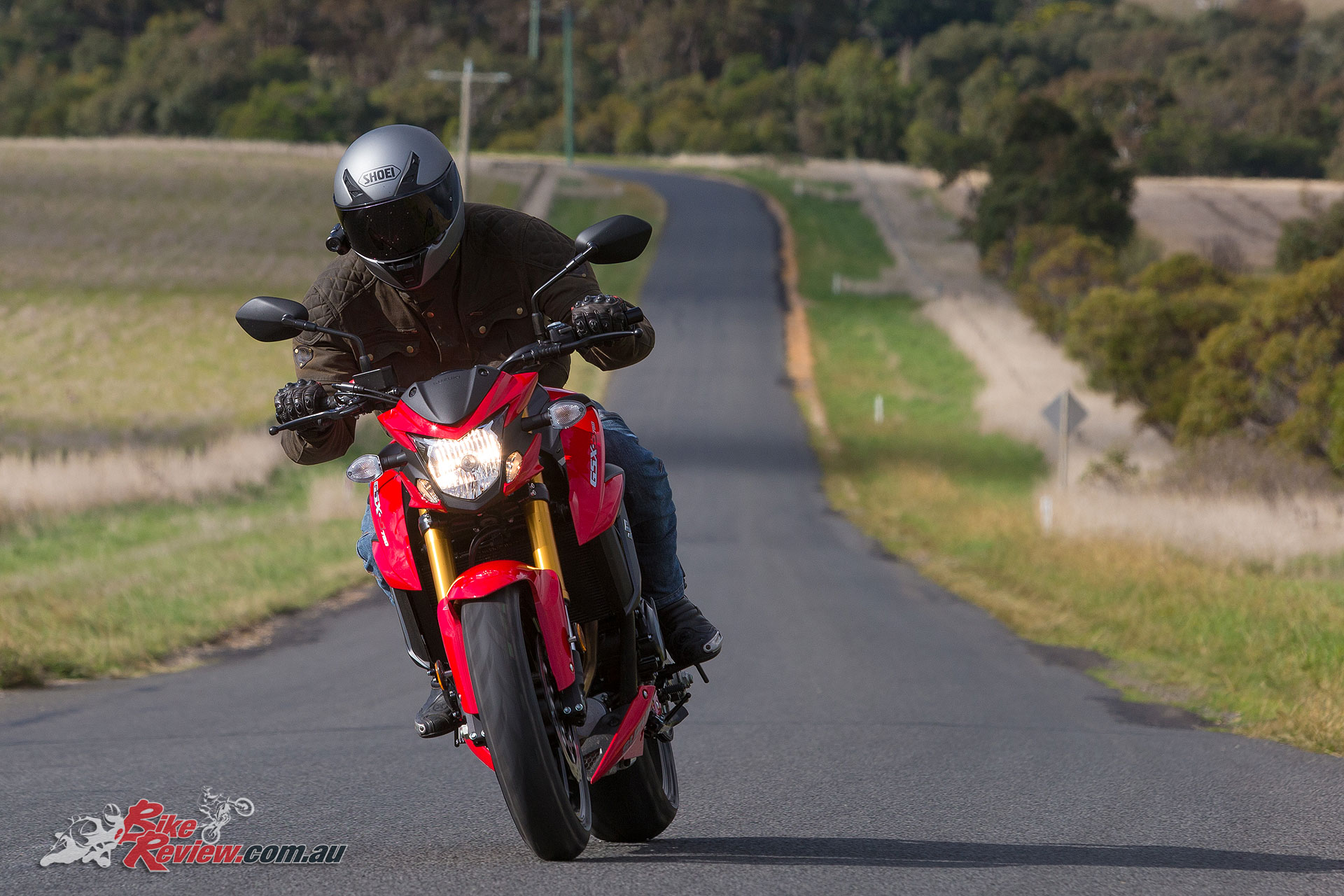
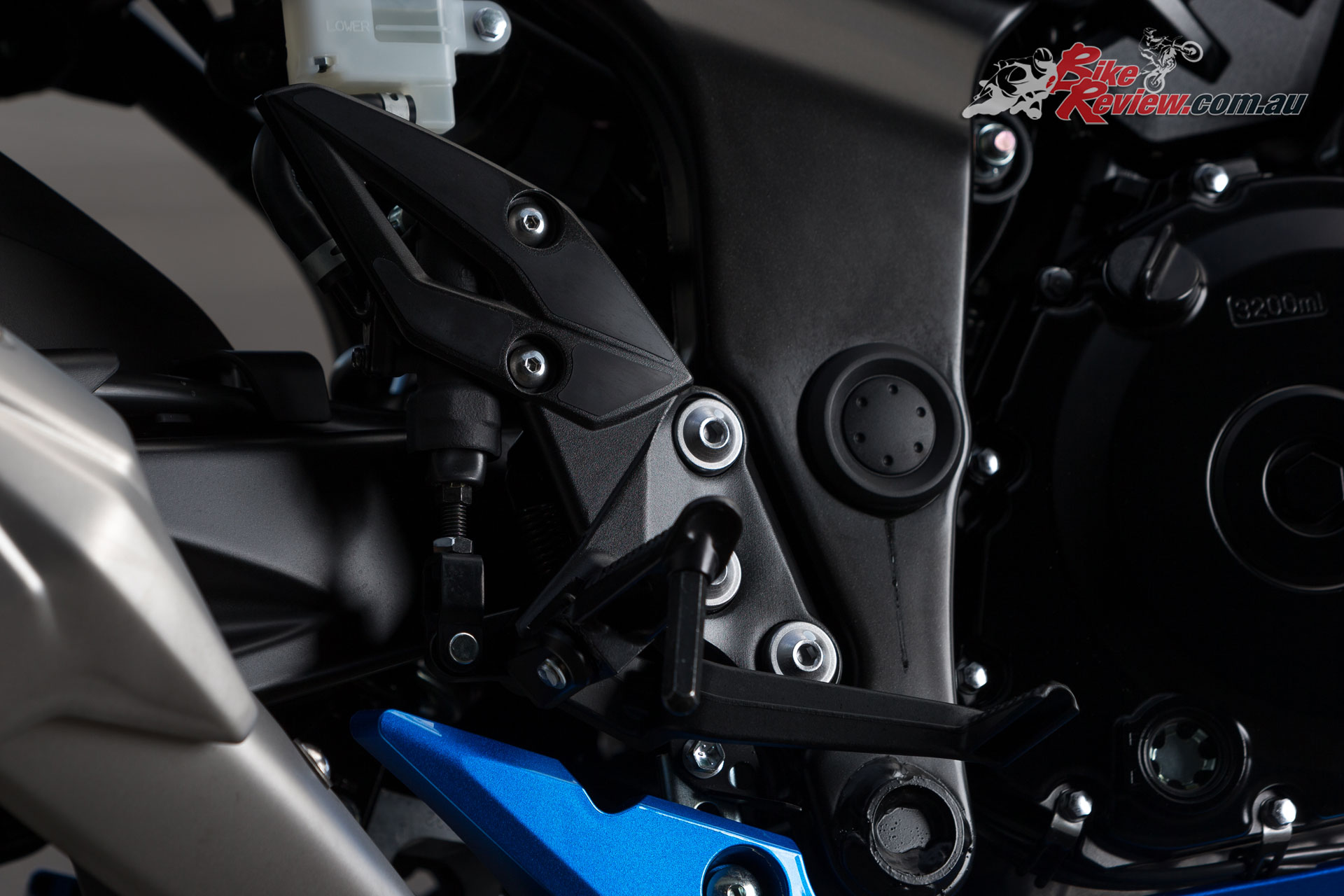

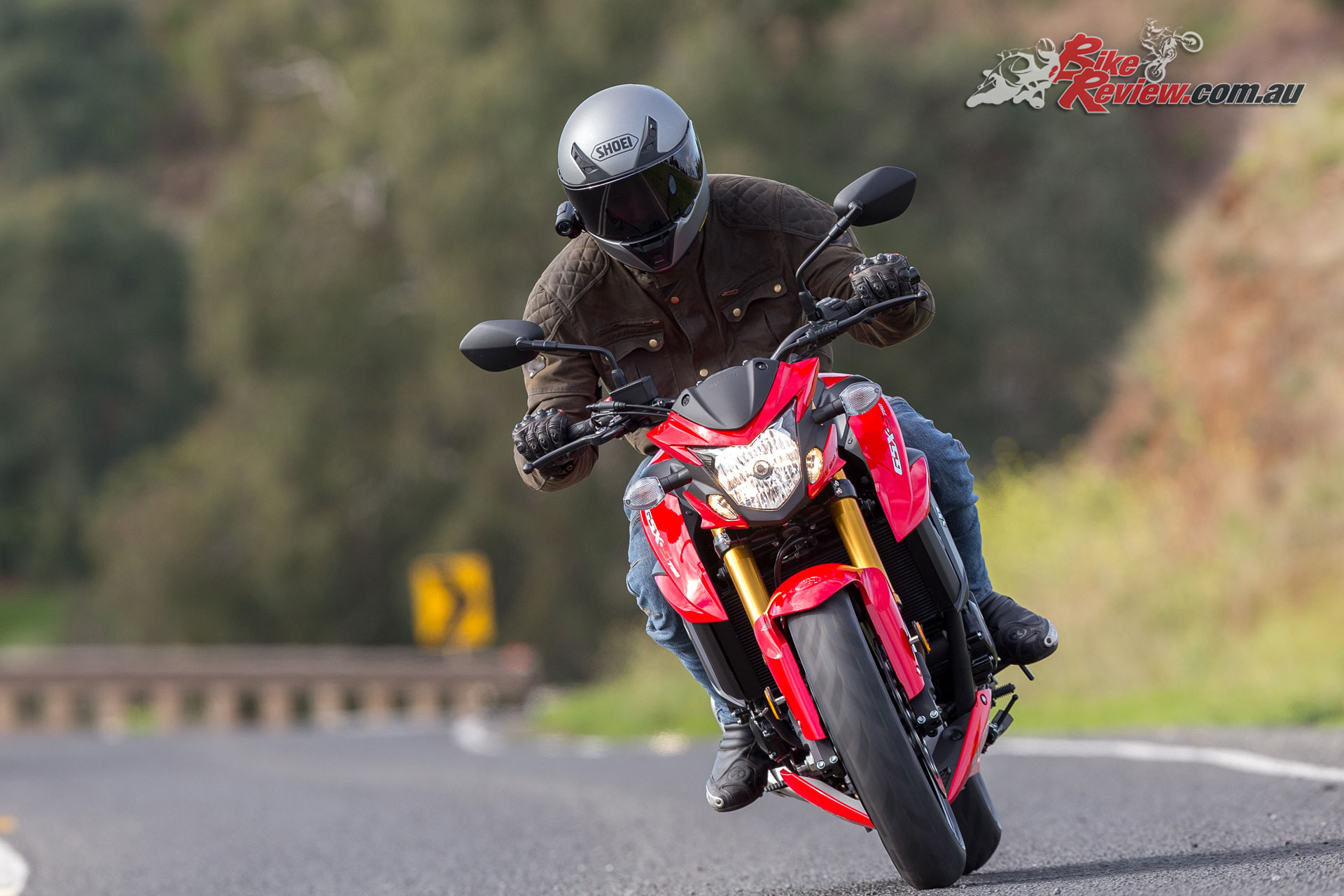
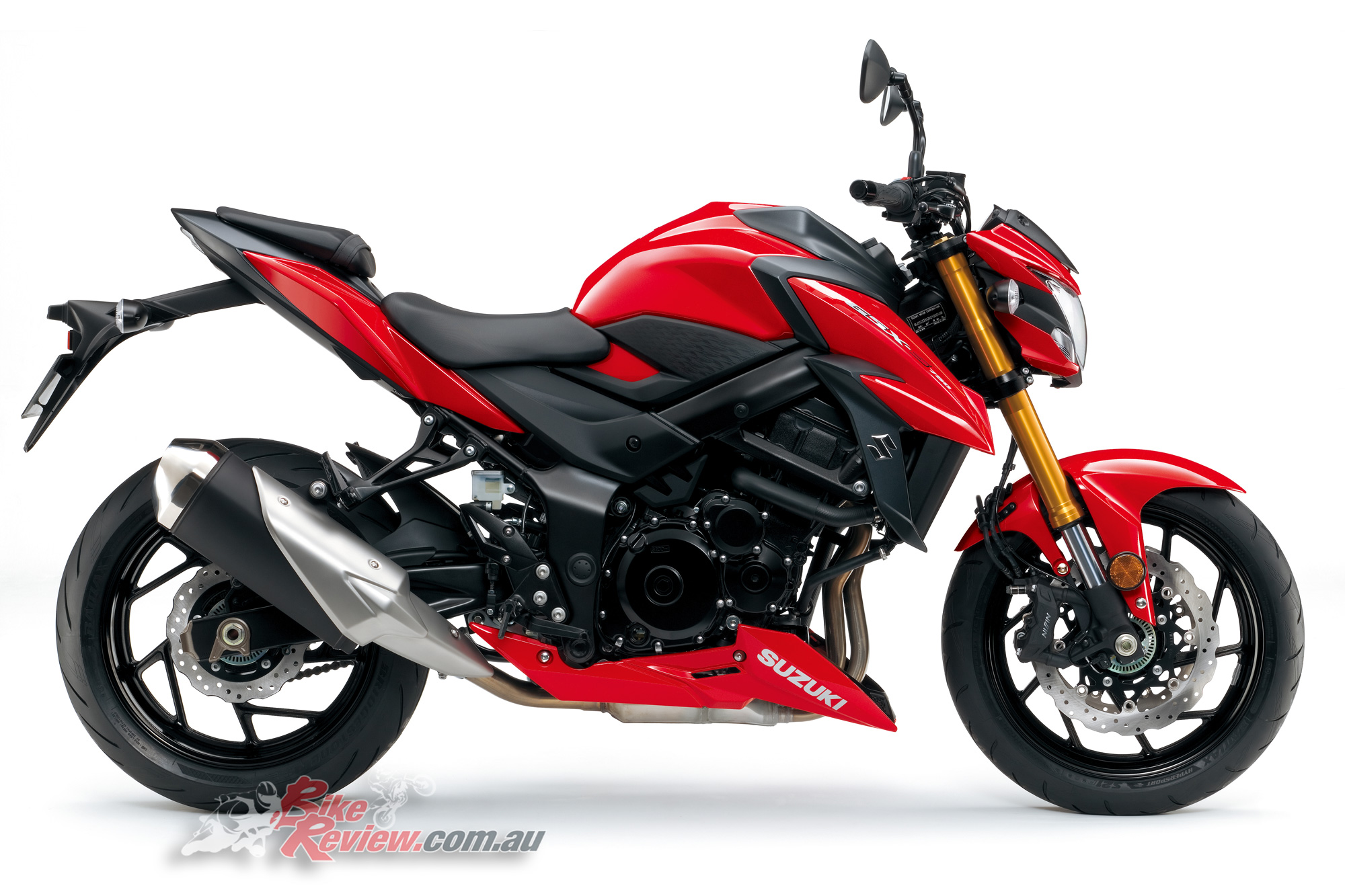
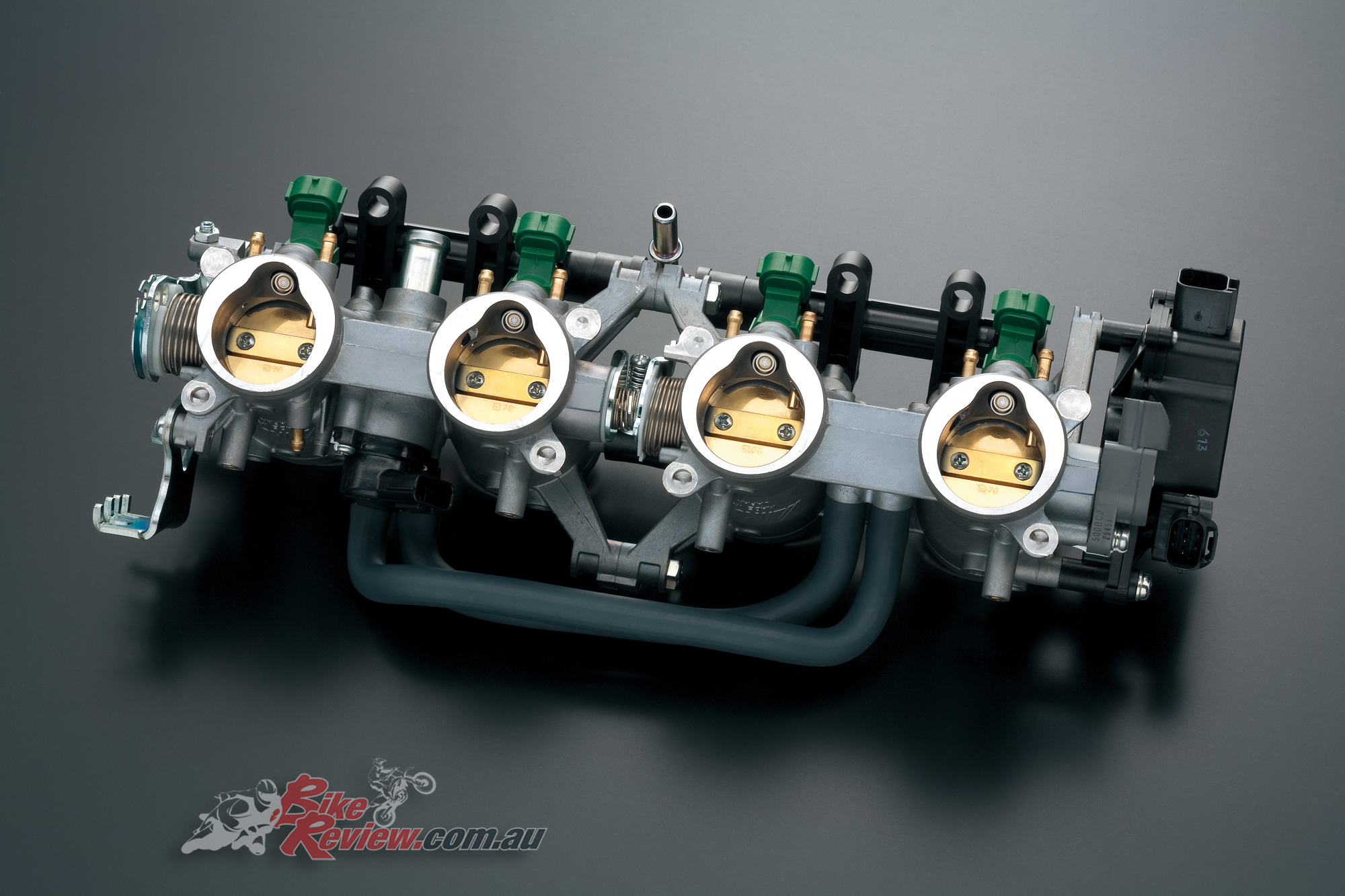
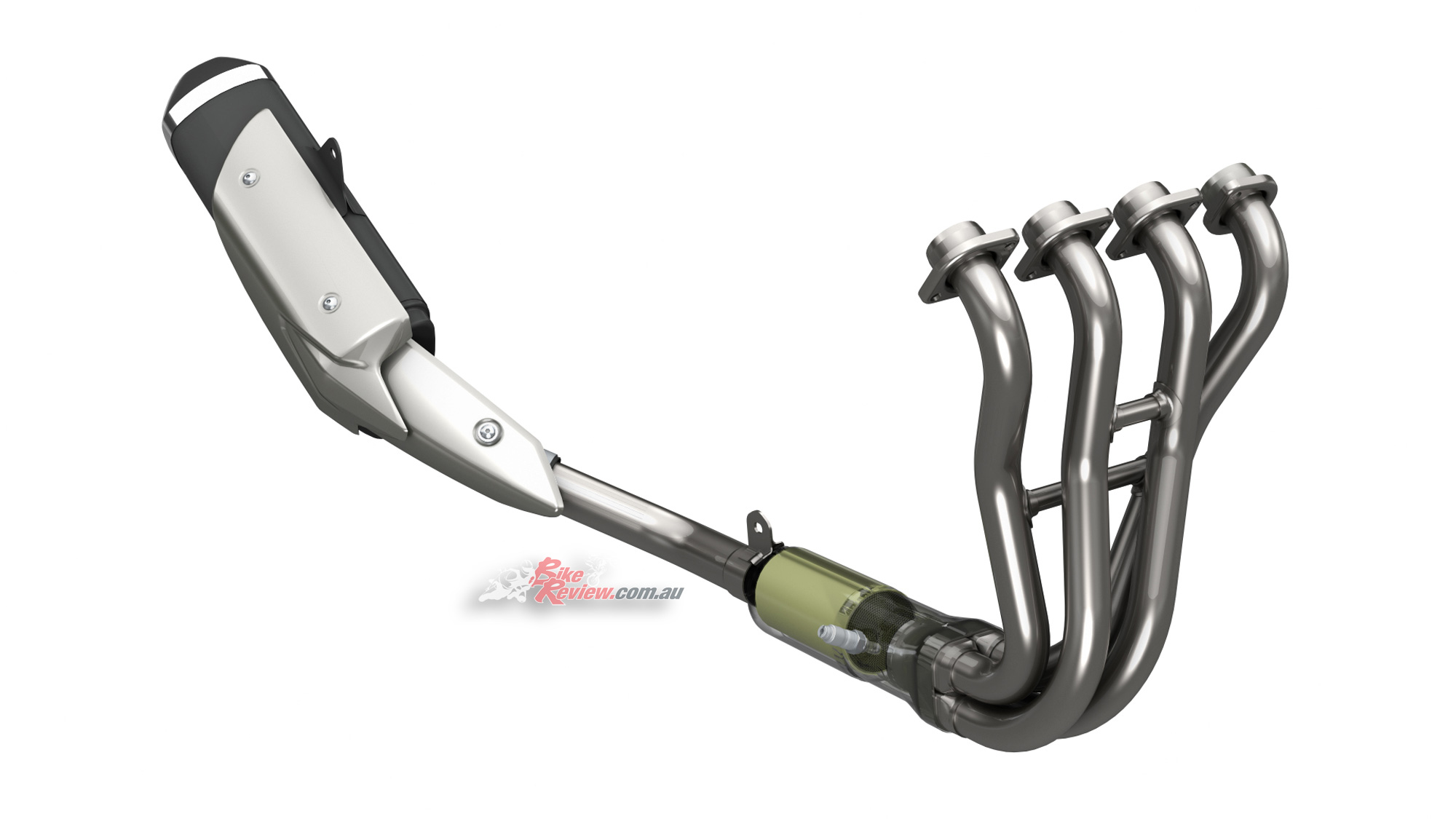
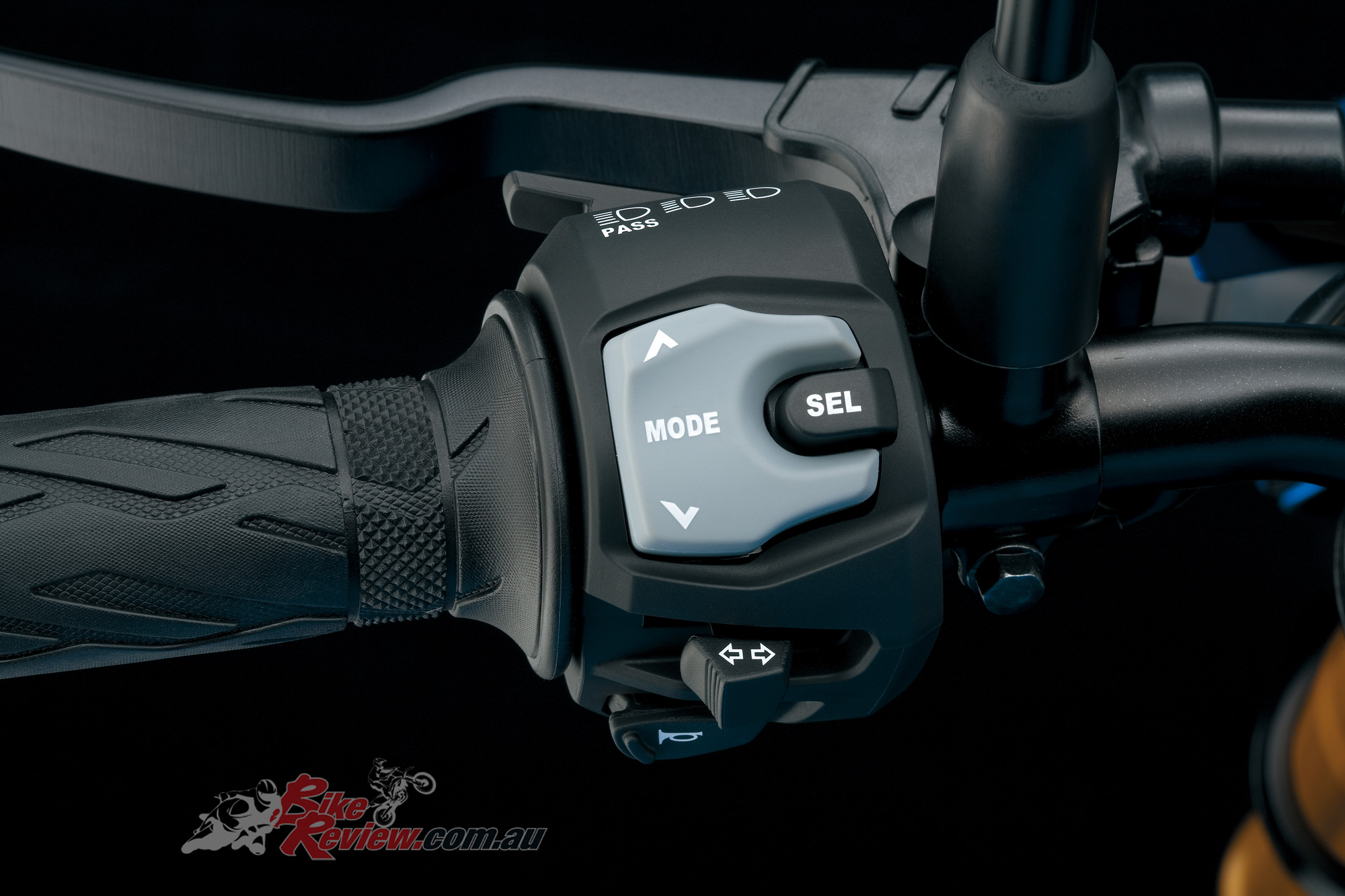

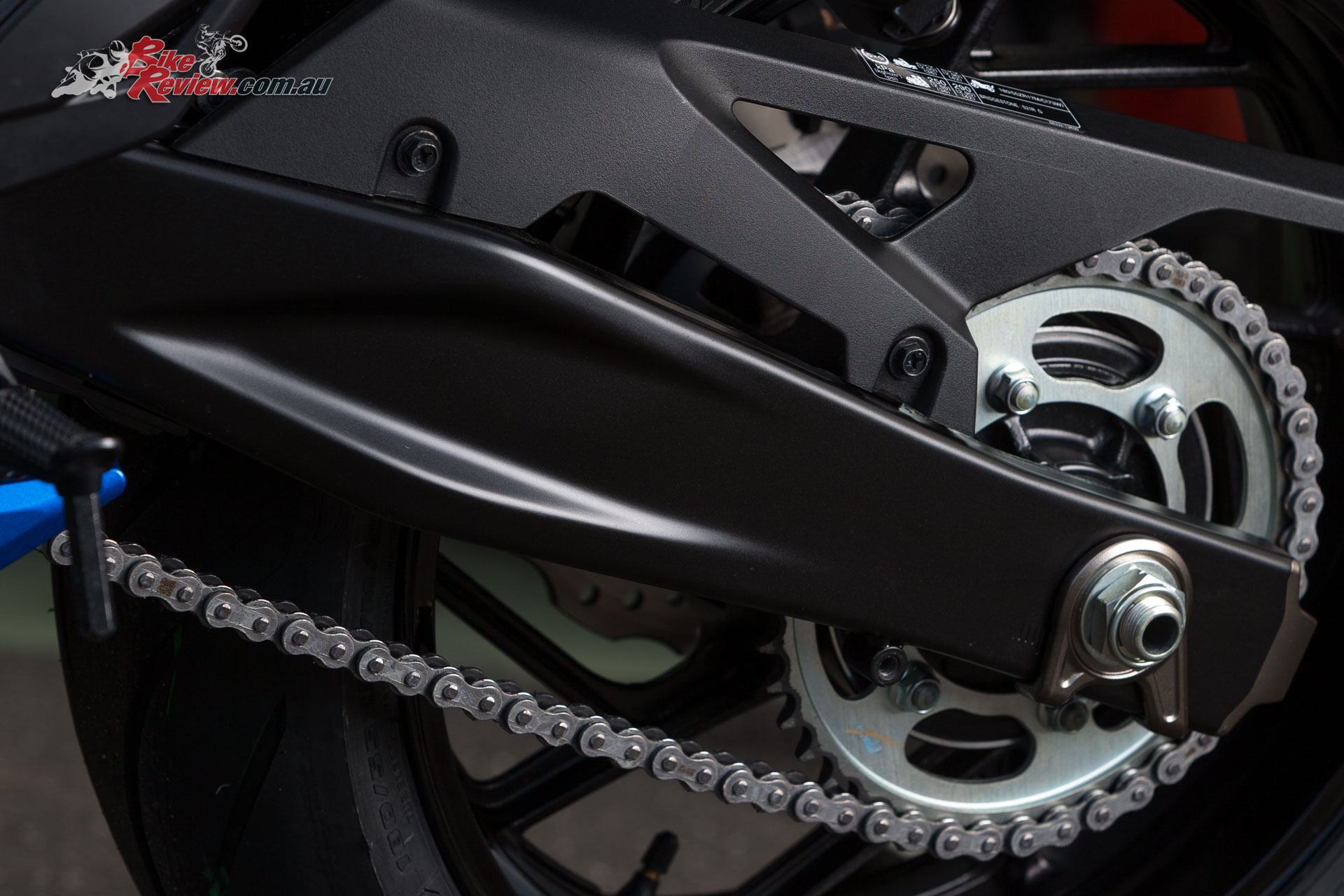
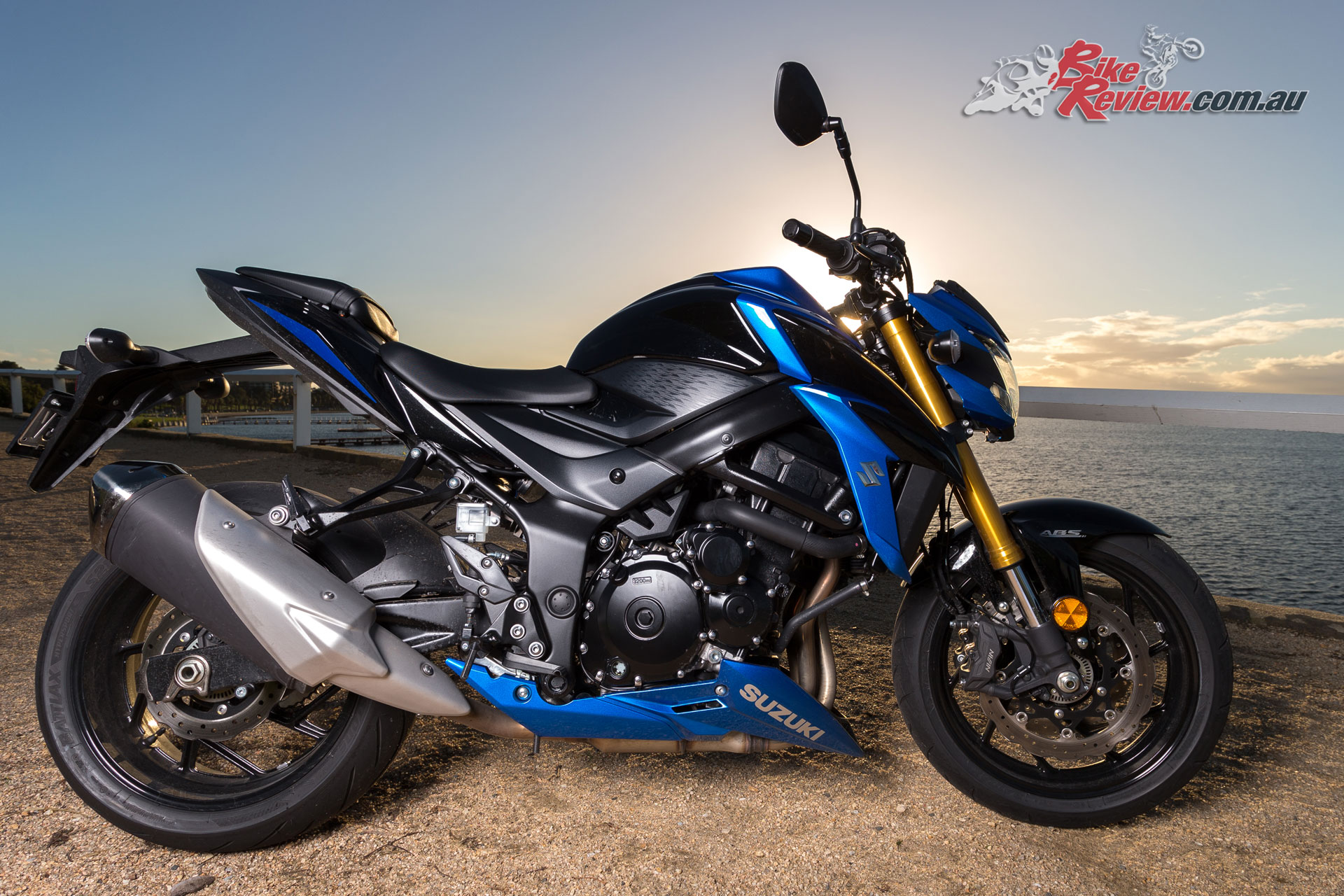

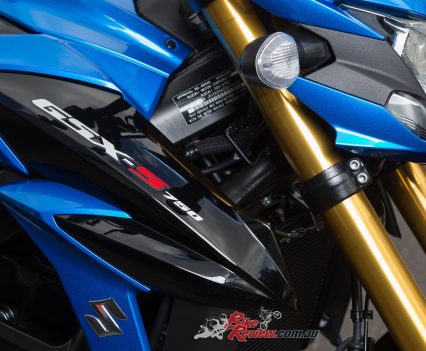
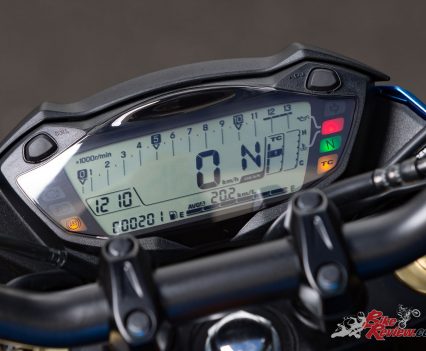
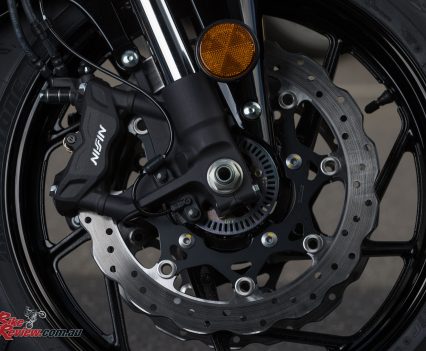
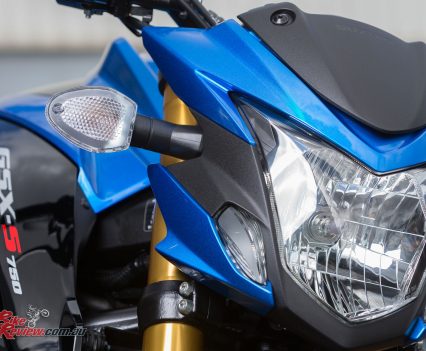

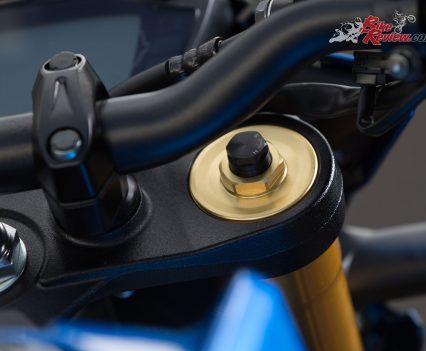

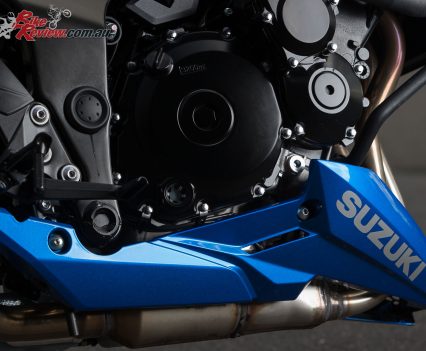
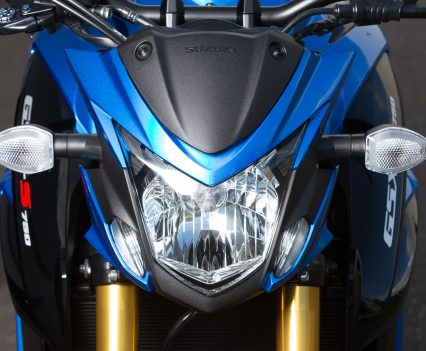
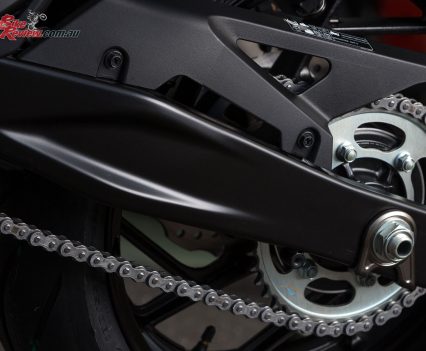
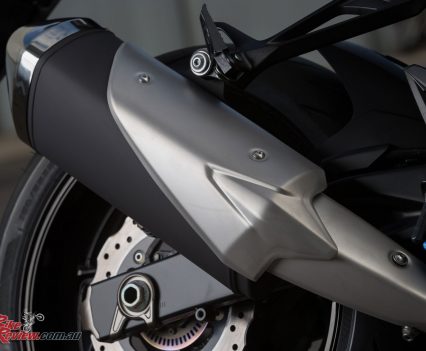

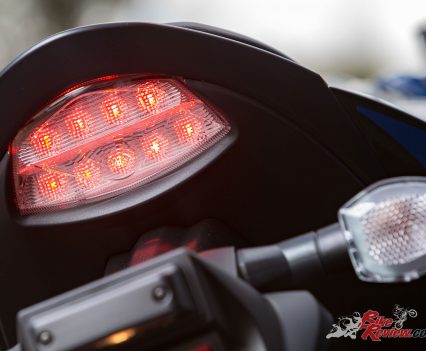
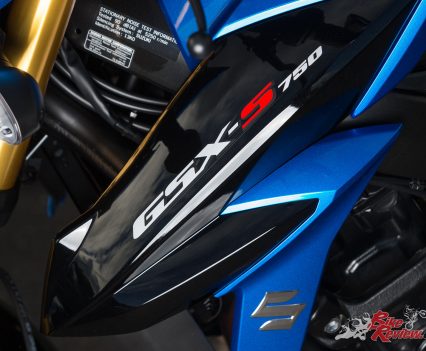
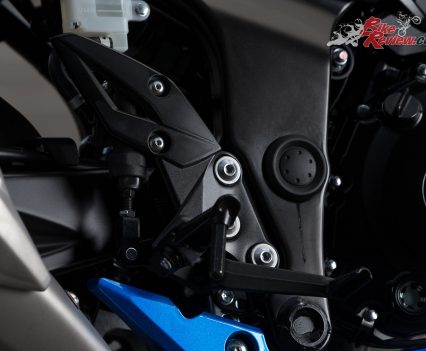
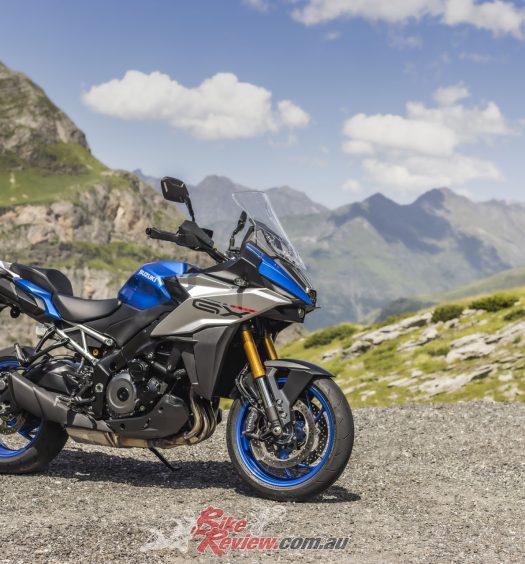
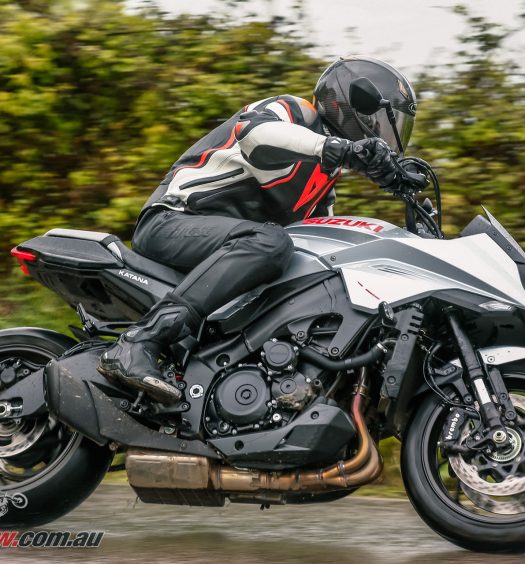





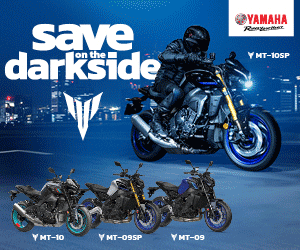







August 12, 2017
Great review Kris – looking to test ride one of these for my next bike. Was looking at the VFR-800 but it seems the Suzi is better value with the same or better grunt and features.
Btw, it’s not “mat” black, it’s “matte” black – thought a journalist would know these things.
August 13, 2017
Hey Mike, the GSX-S750 is definitely worth a test ride. It’s probably on the sportier end of the spectrum compared to the VFR800, but Suzuki have done a great job for the overall package, and value is hard to beat.
I’ve amended the review with the correct colour names, good catch. We were using the original information provided by Suzuki, which has since been updated.
Let us know how you go!
August 20, 2017
Hey I’m curious, is there ever a moment in the gsx-s750 where you found the power drops off or fades at the top end or does the power stay strong up to redline?
August 24, 2017
Hey Sahil, during our testing I wasn’t quite hitting redline, as the GSX-S750 has a great mid-range that extends right up through the rev range. Getting close there was a strong punch of top end power though, which was a bit unexpected at first. So Suzuki have done a great job with the low to mid-range, without trading off the excitement higher up.
October 3, 2017
Very nice review! I’m seriously considering adding this bike to my stable.
October 5, 2017
Thanks RJ, having tested the bike I’d have to say you couldn’t go wrong with the GSX-S750. It’s such a fun machine, Suzuki have done an excellent job, and it’s very competitively priced.
Let us know whether you pick one up, and if so, what colour you choose!
November 8, 2017
Do you think it would be suitable for a taller rider ? I’m 184 cm or 6″1 .
November 8, 2017
Hey Chris, during the Australian launch there were a number of taller riders who also found the bike comfortable and there was no complaints I heard regarding the size or dimensions, which is normally something that comes up, if it’s a problem.
August 9, 2018
Hi kris, thinking of buying this bike very soon, my concern is fueling issues same as the 1000cc, in city riding is it smooth, don’t want to feather the clutch, and are the handlebars not too low for long touring?
August 9, 2018
Hey Andrew,
The GXS-S750 had none of the throttle snatch that the 1000cc variants are known for in my time testing the bike, it was very smooth. The handlebars may look a little on the sporty side, but they are mounted via risers off the top triple, so they are quite tall. I found it a very natural and relaxed seating (and ‘bar) position at 180cm tall, without weight on the wrists. The lack of wind protection without a screen would probably be something I’d look at fixing for long distance touring.
September 29, 2018
Hi! Great review! Do you have an article comparing this to the Mt-09 and/or Z900? All 3 seem to be in the same price point. Many thanks!
October 29, 2018
Hi Nash, we don’t sorry but we do have reviews on both of those models on the site. The MT-09 and Z900 are both fantastic bikes.